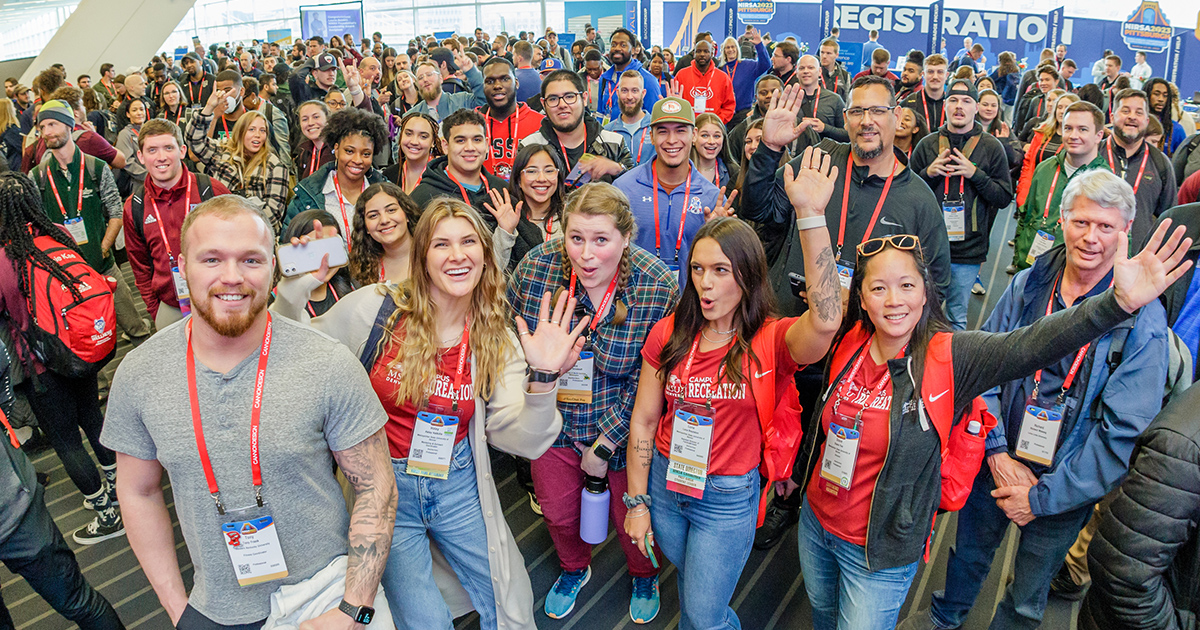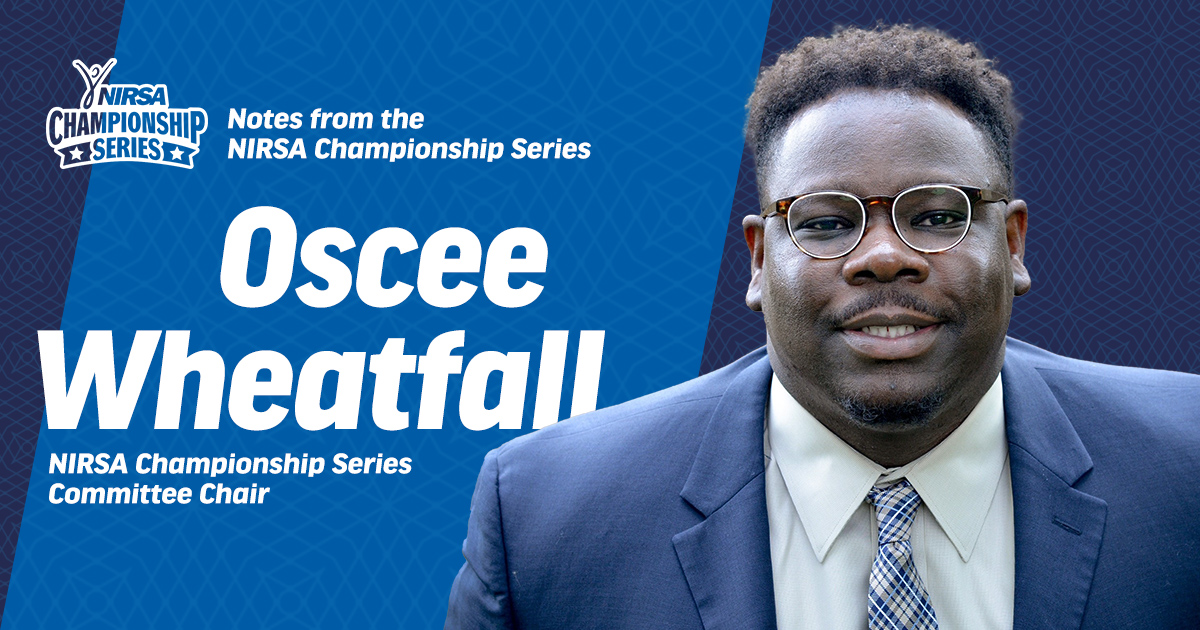By Kurt Klier, Manager of Cole Fieldhouse and Reckord Armory at the University of Maryland-College Park
For many, 1994 was a memorable soccer year—the United States hosted the World Cup and advanced to the round of 16 for the first time since 1930, bringing the game to a whole new level of national consciousness. It’s fitting, then, that the NIRSA National Soccer Championships began in 1994 too.
The NIRSA National Soccer Championships are one of the longest running and most successful programs within the NIRSA Championship Series. In 1994, the first NIRSA National Soccer Championships were held at The University of Texas at Austin. The top 15 sport club teams—eight in the Men’s Division and seven in the Women’s Division—came from across the country to compete for the very first national titles. This year will be the 22nd Annual NIRSA National Soccer Championships. The tournament will be held in Phoenix, Arizona from November 19–21. Open and Championship Divisions for men’s and women’s teams will bring together over 2,000 players, staff, and officials to see 96 teams compete for the chance to be crowned a NIRSA National Champion.
Visit Phoenix and the Arizona State University Sun Devil Fitness Complex are acting as tournament hosts for the event. The games will take place at the Reach 11 Sports Complex, which—with 18 regulation-sized fields—is the largest soccer complex of its kind in Arizona and one of the largest in the western United States.
The NIRSA National Soccer Championships just keep on growing. “For the second year in a row, NIRSA used a lottery drawing to decide which teams would participate in the Open Division,” says NIRSA National Sports Program Coordinator Austin Shick. “Eighty-one teams watched in suspense as the 48 available spots were filled one by one. The event was broadcast live from NIRSA Headquarters in Corvallis.”
“No one cared who got credit, just that the right things got done,” explains Director of Officials Noah Yannie about the tournament’s growth over the past twenty years. This has been a huge factor in the NIRSA National Soccer Championship’s success.
Over the years, the topic of whether regional soccer tournaments should come under the umbrella of the NIRSA Championship Series has surfaced. The goal starting from the first year was to get the best teams from across the country to the national tournament. It was from this simple idea that regional coordinators were created. In 1995, the first regional coordinators were appointed across the country. In the early years, their primary function was just to generate regional ranking and provide the top teams with bids to the national tournament. It just made sense to use the current regional model of NIRSA as opposed to re-inventing the wheel—though the NIRSA Championships Series has admittedly explored using different regional models on various occasions. Guidance for the regional coordinators came from the Directors of Competition for the NIRSA National Soccer Championships—and it still does to this day.
Because of the growth and quality of play, it quickly became too difficult under the then-current model to ensure the top teams were getting to the national event. This is when the idea of regional tournaments came about. Region IV was the first to put on such an event, hosting a men’s tournament in 1999. Region V was the last region to get a regional tournament off the ground. They first started with only a men’s tournament, though in 2013 they were able to put on a women’s tournament as well.
As Howard Taylor—Director at Purdue University and Director of Competition for the national tournament from 1994–2004—explains, “A three-day national event is exhausting. There’s a lot of soccer played by the time finals come around, and it’s physically grueling. So you can’t realistically put more games into the mix.” Doug Ewing—Director at Fort Lewis College and Director of Competition since 2005—expands on Howard’s remarks, reminding us that these are student-athletes. This means that if the national tournament was to be any longer it would encroach too much on class and study time. “What we can do,” Doug says, “is really focus in on the regional levels and support those tournaments.” The further regionals are strengthened, the stronger the national tournament will be too.
The regional coordinators took it upon themselves to put on these tournaments, but with each year the responsibility and risk continues to grow. They handle all the aspects of the tournament including location, process, staffing, risk management, and liability. All of this is done without the guidance and protection of the NIRSA Championship Series.
In the beginning—when regional coordinators were first appointed—it was a matter of corresponding with teams using now ancient forms of communication, like faxes, to put together the rankings. The regional structure is the future of soccer. Now each region uses more advanced technology, having created regional websites and google docs to track various score reporting as well as league and tournament information.
Continued support from the regional coordinators institutions is a key component as coordinators’ roles and responsibilities continue to develop. With some leagues overseeing 100 or more teams, the work once done in three to four hours a week throughout the season by one person now often requires two coordinators. Not to mention that as the national tournament approaches the demands increase, resulting in at least ten to fifteen hours of work every week. Some of the regional coordinators have created leagues and also serve or appoint league commissions for the region.
In order to keep a sustainable regional coordinator structure, bringing these invaluable volunteers under the NIRSA Championship Series umbrella is necessary—particularly so they can be under its guidance and protection. As the coordinators’ work continues to evolve, it’s imperative that a clear set of roles and responsibilities are defined. This will ensure the separation of the administrative tasks of a regional tournament from regional leagues coordination.
The NIRSA Championship Series Soccer Work Team, chaired by Laura Thomas, will be working hard to further develop the regional tournaments. At their mid-year meeting, the NIRSA Services Corporation Board of Directors voted unanimously to endorse this concept. Moving forward, the NIRSA Championship Series Soccer Work Team will be developing and finalizing guidelines and tackling issues such as:
- The roles and responsibilities of regional coordinators and the NIRSA Championship Soccer Work Team
- The selection process for regional coordinators
- Regional tournaments format
- Student Officials Development programing
- League management for regions
”The success of the nation tournament really demonstrates the success of collegiate sport clubs on campus,” says Doug. At the heart of it all are the students, and giving them a platform to form lifelong memories as they simultaneously strengthen their commitment to healthy lifestyles, inclusive participation, and good sportsmanship. “You don’t have to be a varsity athlete to be a successful athlete,” says Doug. With the NIRSA Championship Series “you have an avenue to study, still participate in competitive sports, and be well.”
As Randall Ford—Associate Director at The University of Texas at Austin and Director of Competition from 2005–2013—points out, “The national tournament goes way beyond competition and wins and losses. It’s about the players and the building of memories.”






